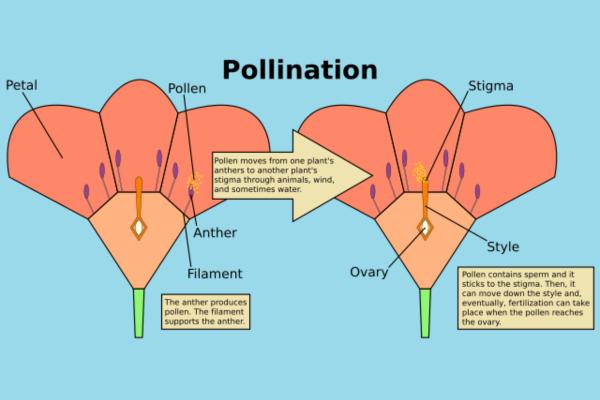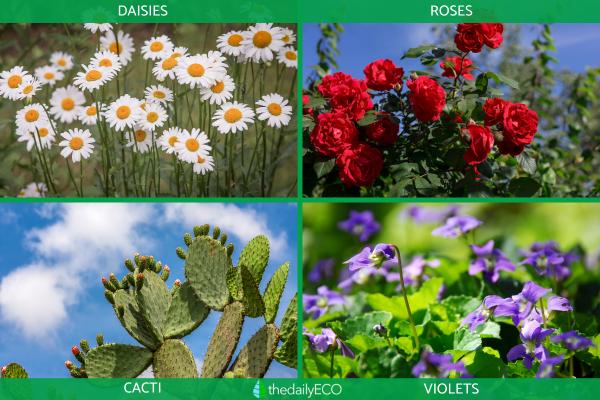
There is an enormous variety of plant species on our planet. They have evolved to adapt to various environments and ecosystems, some inhabiting the most inhospitable environments we can imagine. These adaptations affect various aspects of their life cycle, but some of the most vital affect reproduction. Without the ability to reproduce, all plant life would die out. While many of the methods of reproduction differ, there are some basic fundamentals that all plants share. With this in mind, we can say that plants either reproduce sexually or asexually, although some are able to carry out both types.
thedailyECO learns more about sexually reproducing plants by looking at how this process works. We also discover examples of plants that reproduce sexually which we can find in nature.
What are sexually reproducing plants?
Sexually reproducing plants are plants that carry out sexual reproduction, i.e. the type of reproduction that involves the union of special germ cells known as gametes. This is a biological process which involves these gametes joining together to combine genetic information and produce a new organism. The most common type of plant which carries out sexual reproduction are angiosperms, commonly known as flowering plants.
Sexual reproduction in flowering plants is carried out in the following stages:
- First, pollen is formed in the stamens.
- After this, pollination occurs when a pollen grain reaches the pistil. Pollen travels from one plant to another via a range of strategies, including the wind and other animals. We discover more about the latter with our article asking what animals pollinate?
- The male gametes then come into contact with the female eggs inside the gynoecium.
- The male and female gametes unite, resulting in fertilization.
- Finally, seed formation begins in the fertilization phase, after which the gynoecium will develop into a fruit with the seed or seeds inside. These seeds will spread thanks to their fruits that are consumed by animals.
While many flowering plants will be fertilized thanks to the pollen of other plants, this is not always the case. There are two main types of fertilization in sexually reproducing plants:
- Autogamy: plant fertilization in which the generated pollen grain fertilizes the same flower in which it was generated, making it a self-fertilizing the plant. This allows the plant to multiply in conditions to which it has already adapted, rapidly increasing its number of individuals once it finds itself in a beneficial ecological niche.
- Allogamy: occurs when the pollen grain travels to a different flower. By combining genetic material from two different individuals, a greater capacity for adaptation is achieved. This is because mutations and natural selection allow them to adapt to a hostile or changed environment. Within allogamy, a distinction must be made between xenogamy (different parental individuals) and geitonogamy (pollen fertilizes a different flower from the same individual plant).
Learn more about flowering and non-flowering plants with our article on the differences between angiosperms and gymnosperms.

Examples of sexually reproducing plants
There are a huge number of examples of plants that reproduce sexually. It is a behavior which occurs in all angiosperm plants, although not exclusively. Examples include the following flowering plants, among many others:
- Daisies (Bellis perennis): an evergreen herbaceous plant that grows up to 20 cm in height and has striking, edible flowers. The daisy plant is very decorative and is often used to make infusions with beneficial properties.
- Roses (Rosa spp.): from a genus of shrubs belonging to the Rosaceae family. Almost always with thorns on their stems, it is common to call the flower that the shrub produces a rose. There are more than one hundred species of roses, some of which are especially valued for their large, fragrant flowers which have become a symbol of love in many countries. Discover plants that look like a rose in our related guide.
- Cacti: these succulents from the plant family Cactaceae are capable of reproducing asexually through the generation of offspring. This is a widely used method for propagating them as indoor or garden plants. They are also capable of reproducing sexually through their flowers. Some cacti require a long time and very specific conditions to produce their flowers. They are plants native to very harsh and dry environments, so this investment of energy and nutrients cannot be taken lightly.
- Violets (Viola spp.): angiosperms that are known for their five-petaled flowers that come in a range of colors, but are particularly associated with blues and purples. Flowers turn to fruit capsules after flowering which contain the seeds necessary for new growth.
You can discover more about one of these sexually reproducing plants with our article on different types of cactus without spines.

Difference between sexual and asexual reproduction in plants
As we have explained, plants can reproduce sexually or asexually. Sexual reproduction in plants allows for increased genetic diversity, giving rise to new species and individuals with new characteristics that allow them to better adapt to their conditions. This is an important aspect in human cultivation of plants. However, not all types of sexual reproduction in plants involve two individuals with different genetic material.
Asexual reproduction in plants is always based on cell division by mitosis. It can occur by fission, when a part of the original body separates and gives rise to the rest of the new individual. It can also occur by budding. This is when the parent gives rise to a shoot or bud from which a new, complete individual is born. This does not have to separate from the first.
Now that you've learned all this about sexually reproducing plants, we encourage you to learn much more by reading our article on asexual reproduction in plants and animals.
If you want to read similar articles to Sexually Reproducing Plants, we recommend you visit our Biology category.